SUMMARY
This is AI generated summarization, which may have errors. For context, always refer to the full article.
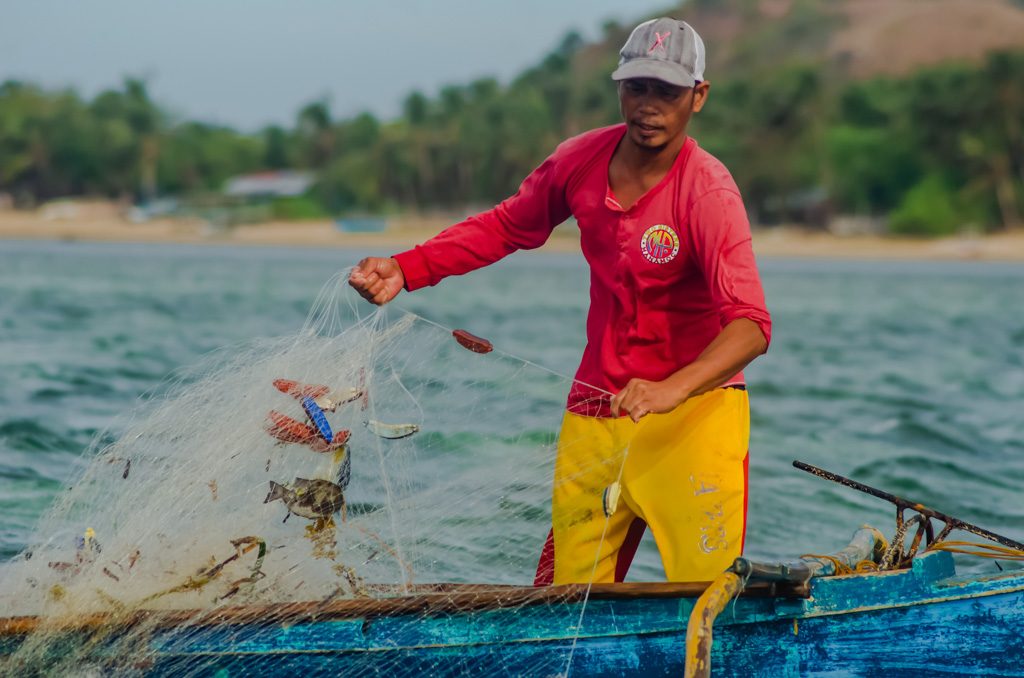
PALAWAN, Philippines – As the northeast monsoon wind blew one morning in March, Jojo Quirino and two other fishermen bravely paddled a small outrigger boat tossed by waves off the coast of Manamoc, a remote island barangay of Cuyo town in the northeastern part of Palawan.
Once they reached a fishing ground 30 minutes away from the coast, the three started pulling in the net they cast the night before. They continued the backbreaking work until the net was finally hauled back to their boat, but upon checking it, the 39-year-old Quirino sighed in dismay.
“It’s really saddening because we left it here the whole night, but it only caught three kilos of danggit (rabbitfish),” he said, his shoulders slumped as they split the catch among themselves. Each of them gets just enough to feed their families for a day.
During the amihan period, the sea is rough, and so is life for Manamoc fisherfolk like Quirino, a father of five.
“If you have children who depend on you, catch as small as this is not enough because it can’t cover your other daily needs,” he told Rappler.

The fishermen have been looking forward to better sailing conditions in April so they can earn well, but that also means competing for good catch with commercial fishing vessels (CFVs) that illegally encroach on Cuyo’s municipal waters, known for economically important migratory and reef fish species.
This pervasive problem in the Philippines’ municipal waters has been exacerbated by the national government’s weak and slow implementation of the vessel monitoring system (VMS). Environmental groups believe this could have addressed the issue that disproportionately impacts artisanal fishers and, ultimately, imperils the country’s food security.
Tracking, identifying vessels
In October 2020, the Department of Agriculture’s Fisheries Administrative Order (FAO) 266 took effect, making the VMS installation mandatory for CFVs weighing 3.1 gross tons and above. The vessel owners are also assigned with maritime mobile service identity numbers by the National Telecommunications Commission (NTC) as part of this tracking system.
“VMS requires a transponder onboard a vessel to transmit its positions and other messages regularly via satellite or shore-based stations,” Rollan Geronimo, fisheries analyst for Asia-Pacific of Global Fishing Watch, explained to Rappler.
Geronimo added that “VMS setups onboard vessels can be customized to include other features, such as geofencing or alerting when the vessel is entering a restricted area, distress alerts, and direct communication with regulators.”
FAO 266 was the Philippine government’s response to the yellow card rating slapped in June 2014 by its largest trading partner for seafood products, the European Union. The import ban warning was issued for the country’s failure to combat illegal, unreported, and unregulated (IUU) fishing; it was lifted in April 2015 with the enactment of Republic Act (RA) No. 10654 or the reformed Fisheries Code, which underpins the vessel monitoring measures (VMM) policy, which covers the use of the VMS.
Without the VMS that tracks vessel movement in real-time and the identification number to determine ownership while at sea, owners of commercial fishing boats will not be able to register or renew their license to operate with the Bureau of Fisheries and Aquatic Resources (BFAR).
Environmental groups and fisherfolk organizations have lauded FAO 266’s promulgation, saying it will help deter the illegal intrusions of CFVs within the 15-kilometer municipal waters, a known spawning ground and habitat for fish that serve as Filipinos’ second staple food next to rice. Under the law, only small-scale local fishers are permitted to operate within the country’s municipal waters.
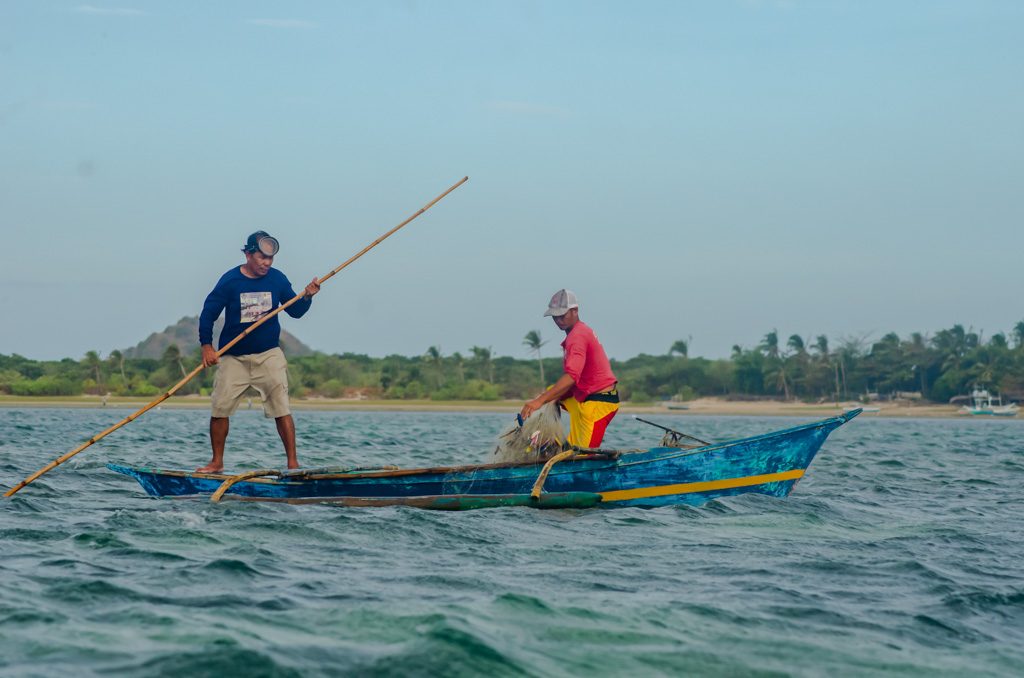
For Pablo Rosales, president of the national alliance of fisherfolk organizations Pangisda Pilipinas, FAO 266 was a victory for his sector that had been fighting for the conservation of the municipal fisheries resources since the 1970s.
“Having this long-sought policy allows our municipal waters to recover from the decades of intense commercial pressure,” Rosales told Rappler.
But nearly two years since FAO 266’s implementation, only 1,566 or 52% of the 2,997 target registered boats in the Philippines have been installed with the VMS-100 transceivers as of April 2022. The policy is part of BFAR’s Integrated Marine Environment Monitoring System project that runs from 2018 to 2022 with a total of P2.097 billion from the General Appropriations Act. Despite the device being free of charge, full compliance is still a huge challenge as the country’s commercial fishing sector continues to strongly resist this national policy.
Challenges
On June 1, 2021, a regional trial court (RTC) in Malabon City in Metro Manila issued a decision declaring the VMM policy null and void for being unconstitutional.
The decision came six months after a group of commercial firms under the Inter-Island Deep Sea Fishing Association filed on December 4, 2020, a case challenging the policy and asserting that it violates their constitutional right to privacy and right against unreasonable searches. The association declined Rappler’s request for comment.
But despite the RTC’s decision, the BFAR and NTC continued to implement the policy until the Office of the Solicitor General (OSG) issued a legal opinion on February 4, 2022, compelling the agencies to follow the RTC order.
In a statement to Rappler, BFAR National Director Eduadro Gongona said the agency “respects the decision of the Malabon City RTC Branch 170 and heeds its order.”
“[We] will refrain from implementing FAO 266. This is without prejudice, however, to any action or order of the Supreme Court or until its final adjudication of the merits of our appeal,” he said.
Gongona added that a BFAR memorandum was issued on February 9, 2022, directing regional offices and concerned divisions to “suspend the implementation of FAO 266 until further advice.”

By halting this policy that gives teeth to the Fisheries Code of 1998, Pangisda Pilipinas said the government is only allowing commercial fishing operators to continue indulging in the municipal waters’ bounty without thinking of its sustainability.
“It will only make rich capitalists richer,” Rosales said.
Can nationwide implementation be suspended?
In the same month as the RTC decision, the BFAR and NTC, through the OSG, filed an appeal with the Supreme Court on June 25, 2021, and asked that a temporary restraining order or permanent injunction be issued against the decision.
“We maintain that the said FAO is an important fisheries management measure that will enhance the capacity of the government to monitor fishing operations and enforce fishery laws in Philippine waters to achieve long-term sustainability of our resources,” Gongona told Rappler.

Questioning the suspension, marine conservation group Oceana appealed the case with the Supreme Court. The group said the RTC order was “not consistent under existing laws,” and added that it was in violation of Section 134 of RA 10654 or the amendatory law to the Fisheries Code.
“Trial courts have no power to issue injunctions in the enforcement of fisheries laws,” said lawyer and Oceana Philippines chief Gloria Estenzo Ramos. She added that the applicability of RTC orders would be limited to its jurisdiction and thus cannot be implemented nationwide.
Lawyer and environmental policy expert Antonio La Viña agrees with Ramos.
“Regional trial courts do not have such authority and cannot certainly make its order apply nationally,” he told Rappler.
Ramos further argued that the prohibition against the enforcement of environmental laws is reiterated in the SC’s own rules on environmental cases and the Office of the Court Administrator’s Circular No. 87-2016.
Encroachments continue
In the absence of a fully operational VMS, one technology being used especially by local government enforcers to monitor illegal commercial fishing in their waters is the Karagatan Patrol. Created by Oceana Philippines and supported by the League of Municipalities, the online platform uses the visible infrared imaging radiometer suite (VIIRS), a satellite-based tool that detects the high-radiance lights used by these vessels to lure squids and fishes.
From 2018 to 2021, Karagatan Patrol tracked 160,135 CFVs illegally operating within the Philippines’ municipal waters. In the same period, Palawan, with its extensive reefs and rich fishing grounds, recorded 24,358 VIIRS boat detections, topping the list of provinces with the most intrusions.
The platform also generates disaggregated VIIRs boat detection data for municipalities during the same four-year period. In terms of CFV encroachments, Cuyo’s municipal waters saw the greatest number of detections among all Palawan towns (and 7th nationwide) at 3,607. This huge number reflects the intense pressure that has put a strain on Palawan’s fish resources, which “constitute the most important and popular industry of the province.”
“With the commercial boats’ relatively advanced fishing gears and technologies, they can catch more diverse species of fishes than the small fishers in a span of time and space,” Benjamin Gonzales, author of a field guide that features Palawan’s 431 coastal fish species, told Rappler.
Gonzales said Sulu Sea’s northeastern portion covering Palawan’s Cuyo town is one of the country’s main fishing grounds for galunggong, and is also suspected to be the spawning ground of various pelagic or migratory fish species, including galunggong and tuna, among others.
“Commercial fishing boats tend to flock and fish in this area because of the abundance of fishes,” added the professor and vice president for research, extension, and development at the Western Philippines University.
Among provinces, Palawan is one of the major fish species suppliers to Metro Manila’s highly urbanized cities, with 95% of the galunggong catch landed at the Navotas Fish Port originating from the province, the BFAR reported.

Encroachments of CFVs not only in Palawan but in other Philippine municipal fishing grounds show no sign of slowing down. As the government paused the VMM rollout, municipalities across the country logged encroachments of 8,613 CFVs in the first quarter of 2022, Karagatan Patrol reported. But going after these unwelcome visitors is difficult since the VIIRS doesn’t give much information that allows for prosecution of violators.
“The downside of using VIIRS,” said Global Fishing Watch’s Geronimo, “is that the vessel type and identity cannot be determined easily, and it provides only one positional data per night.”
This limitation could be addressed by FAO 266, wherein the CFVs are required to install onboard a mobile tracking transceiver unit containing their names and unique identifiers, among other data, which are registered to the VMS. The transceiver is connected to the electronic reporting system that transmits a status report to the BFAR Fisheries Management Center at least 24 times a day.
The information VMS transceivers send to BFAR includes the volume of fish caught and the vessel position where fish were caught, thus ensuring that CFV operations do not contribute to the overexploitation of fisheries resources, especially in municipal waters.
Drop in fisheries production
Conservation groups, including Oceana Philippines, blame CFVs for triggering fish stock depletion at an “alarming rate.” They say intense CFV operations caused the overfishing of 75% of the Philippines’ fishing grounds, resulting in the decrease in total fisheries production of the country over the past years.
In 2021, the Philippine Statistics Authority reported that the country's total fisheries production was at 4,250,790 metric tons – down by -3.4% from 2020's 4,400,373 mt. During this pandemic period, commercial fisheries production volume for 2021 slid by -10.7% at 871,240 mt from the previous year's 975,205 mt. Marine municipal fisheries yielded 927,700 mt – a -2.6% drop from 2020, when it yielded 952,188.62 mt.
Meanwhile, a recent study by the BFAR and the United States Agency for International Development estimated that Philippine municipalities are losing 257,000 to 402,000 metric tons of fish catch a year to illegal fishing, raising the possibility that a large part of the loss could be attributed to CFVs' operations in municipal waters.
"It's high time to implement the VMM because this will prove whether or not the commercial fishers are telling the truth that they're not pillaging the municipal waters," Rosales said.
Scientists and advocates warn that the delay in the implementation of FAO 266 would embolden erring CFVs to continue breaking into municipal waters with little deterrence, aggravating the already dreadful situation of around 2 million subsistence fisherfolk – the country's second poorest sector after farmers.

"Without the full implementation of the vessel monitoring rules," Ramos said, "commercial fishers like those in hotspot areas will continue to prey on our municipal fisherfolk and plunder the depleted fisheries and resources in the municipal waters where they are clearly prohibited by law."
Appeal from the frontlines
Back in Manamoc, fishers like Quirino welcome the start of the fishing season this April – the same time of the year their waters are also frequented by CFVs, which he said are depleting their fishery resources and ruining their nearshore fishing grounds.

Nowadays, Quirino and his two colleagues would go to shallow reef areas a few kilometers away from the island only to bring home 20 kilos of assorted reef fish like lapu-lapu (grouper) and kanuping (sweetlip emperor), sold for as low as P60 locally.
"Some five years ago, that same spot would give us 30 to 40 kilos of fish," Quirino, a fisherman for over two decades, pointed out.
"They don't want VMM installed in their boats because they can't enter here to fish," said Quirino, who's also been a fish warden for eight years. "That's why the government should implement this policy, so it would know what these vessels are really doing while at sea."
Limitation in resources, among other bottlenecks, hinders local government units from efficiently performing their task of enforcing fisheries laws and regulations and effectively stamping illegal CFVs out of their respective coastal waters. Cuyo, a fourth-class municipality, knows this problem all too well.
Cuyo Mayor Mark delos Reyes said the municipal government has limited enforcers and no speed boats that can go after commercial hulbot-hulbot vessels that drag corals and indiscriminately amass different fish species.
While these CFVs could still evade arrest at sea, having their identities registered in the system means they can't evade the law as it allows authorities to track them down on land and hold them accountable.
"I believe that the monitoring and enforcement will become easy for us with the VMM," the mayor said.

For Quirino, delaying the VMM implementation will only make life harder for fishers in Manamoc and elsewhere in the country.
"These big fishers don't think of a sustainable future – they only think of earning more money at the expense of our municipal waters. But how about us small fishers? The government should discipline them to ensure our livelihood and welfare," he said. – Rappler.com
Add a comment
How does this make you feel?






![[Rappler’s Best] The elusive big fish – and big fishers](https://www.rappler.com/tachyon/2024/04/The-elusive-big-fish-%E2%80%93-and-big-fishers.jpg?resize=257%2C257&crop=220px%2C0px%2C720px%2C720px)
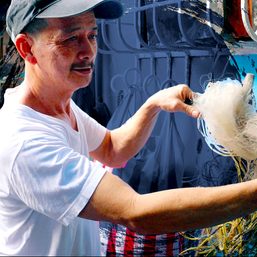
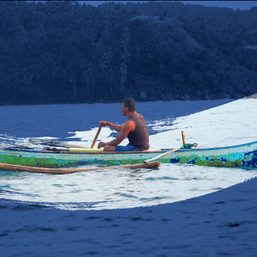
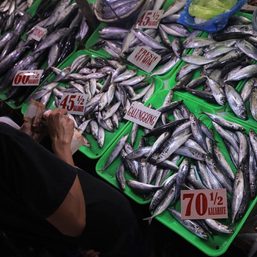
There are no comments yet. Add your comment to start the conversation.